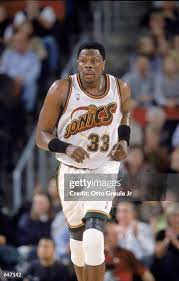
Introduction
The Seattle Supersonics, a beloved former NBA franchise, hold a special place in the hearts of basketball fans. Established in 1967, the team captured the essence of Seattle’s vibrant culture and made a significant impact on the NBA landscape. Understanding the history of the Supersonics is crucial as the team iconizes a pivotal era in basketball and showcases the passionate connection between sports and community.
Key Achievements and Events
Throughout their 41 seasons in the NBA, the Supersonics achieved a number of notable milestones. Their most significant triumph came in 1979 when they clinched the NBA Championship, defeating the Washington Bullets. This victory not only marked the height of their performance but also solidified Seattle’s reputation as a basketball city. The Supersonics featured legendary players such as Gary Payton and Shawn Kemp, who became synonymous with success and electrifying performances in the late 1980s and 1990s.
In addition to their championship title, the Supersonics were consistently competitive, making the playoffs 17 times and reaching the NBA Finals on three occasions. The team was known for its fast-paced style of play, creativity, and the passionate support of its fanbase. The iconic ‘Emerald City’ jerseys became a symbol of pride among fans, further embedding the franchise in the city’s culture.
The Move to Oklahoma City
However, the Supersonics’ journey was not without challenges. In 2006, amidst financial struggles and disputes over a new stadium, the franchise relocated to Oklahoma City and was rebranded as the Thunder. This move was met with significant disapproval from many fans, leading to feelings of loss and nostalgia for the Supersonics’ legacy.
Current Attempts for Revival
In recent years, there has been a growing movement among fans and local officials to bring an NBA franchise back to Seattle. Increased discussions about a potential new arena have reignited hope for basketball’s return. Several advocacy groups are working diligently, citing the city’s passionate fanbase and booming economy as justifications for expansion.
Conclusion
The Seattle Supersonics may no longer exist in their original form, but their impact on the city of Seattle and the NBA remains profound. The legacy of the Supersonics serves as a reminder of the strong connection between sports and community. As efforts to revive professional basketball in Seattle continue, the memories of the Supersonics’ storied history inspire a new generation of fans and builders of the future basketball landscape.



